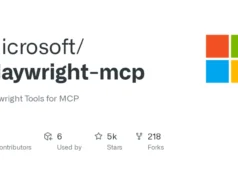The term open-source refers to code that is made publicly available for scrutiny, modification, and distribution. It is typically made by volunteer communities although some projects also include the support of major corporations.
By definition, open-source projects fall under licensing that allows users to adopt open-source projects for personal and sometimes organizational use. Often, open-source components can be used in products as long as the products are also offered under open-source licensing.
In the past, open-source was somewhat limited to pet projects with just a few widely adopted projects. Now, however, most organizations are using or including open-source components in their operations, products, and services.
Open-source projects are now more widely adopted because of the flexibility, innovation, and potential cost savings that these components offer. However, there are certain challenges you need to consider, and properly plan for, when you make use of open source components.
Open Source Security Concerns You Should Know About
While there are many benefits to open-source components there are also several risks that you should consider before incorporating a project. When evaluating these risks, keep in mind that some open-source software security concerns hold more weight than others. Many security myths exist when it comes to open-source and it is important to distinguish myth from fact.
Four legitimate risks to consider are:
1. Publicity of exploits
When open-source vulnerabilities are discovered, the issue is typically reported either directly to the project maintainer. It might also be reported to a vulnerability oversight organization, such as MITRE. After vulnerabilities are reported, projects are usually given between 30 to 90 days before the report is made public.
This reporting helps hold projects accountable for their security measures. It also helps ensure that users are aware of vulnerabilities and can take appropriate precautions, such as applying patches.
There are two downsides to this model. One, when vulnerabilities are made public everyone has access to details about the issue. This includes which components are affected, how the vulnerability can be exploited, and what remediation steps are available. The problem is that both users and potential attackers are informed of these details. If users do not respond quickly, they are sitting ducks for hackers.
Two, while reporting vulnerabilities is standard practice, nothing requires that users be notified of issues or that projects make vulnerabilities public. Open-source projects are not used under a service level agreement, nor are updates typically pushed to users. This means that in the end, it is the user’s responsibility to make themselves aware of vulnerabilities and to take appropriate actions.
2. Operational risks
Open-source components can be useful tools for increasing developer productivity. When included in projects, components can eliminate the need to write code from scratch. Components can also provide functionality that in-house teams may not have the expertise to recreate.
The risk when including open-source comes from how, when, and where components are added. IT teams need to ensure that components are used uniformly, patched as appropriate, and implemented according to license. If they cannot, multiple different versions of components may be used making it difficult to patch and secure use. Also, if components are used against licensing, you open yourself to legal liability.
Additionally, it is possible to include components that your team does not fully understand the functionality or risks of. If teams do not understand how a component operates, it can create compatibility issues in projects. It can also make it difficult to maintain the integrity of projects since your team is incorporating additional dependencies that may change at any time.
To negate these risks you should develop a policy outlining which components and versions are allowed and under what conditions. You should also make sure to keep an inventory of use so you can quickly locate components as needed for updates. This inventory can also help you identify the source of issues if your projects suddenly stop functioning as expected.
3. Lack of standardization
When incorporating open-source into your systems and products it is important to remember that there is no rigid standardization in open-source components. Rather, each project defines and is responsible for maintaining its own quality and security standards. This is further complicated by the community contributions that form open-source codebases.
For example, contributors may have very different styles of programming. This means that code within a project may include a range of functional implementations, formatting styles, or levels of commenting. This can make it difficult to identify issues in code and can lead to a larger number of bugs.
As you select open-source projects to implement, it is important that you take the time to verify project quality first. This can mean evaluating the number of contributors, the frequency of contribution, rates of defects found and fixed, and frequency of release. It should also involve looking directly at and even testing code to make sure that it passes your standards. Taking the time beforehand to verify the quality and security of code can help you avoid risks down the line.
Conclusion
Just like any software, open-source components are not without risk. However, that does not necessarily mean open source code poses more risks than proprietary codebase. Some security concerns are universal. For example, operational risks and lack of standardization can create vulnerabilities in any code type.
On the other hand, the disclosure process of open source vulnerabilities often follows a unique pattern, during which users are only made aware after the exploit is made public, along with patches and updates. You can manage this risk by keeping an inventory of your code assets, keeping track of open source components, and monitoring vulnerabilities on a continuous basis.


























